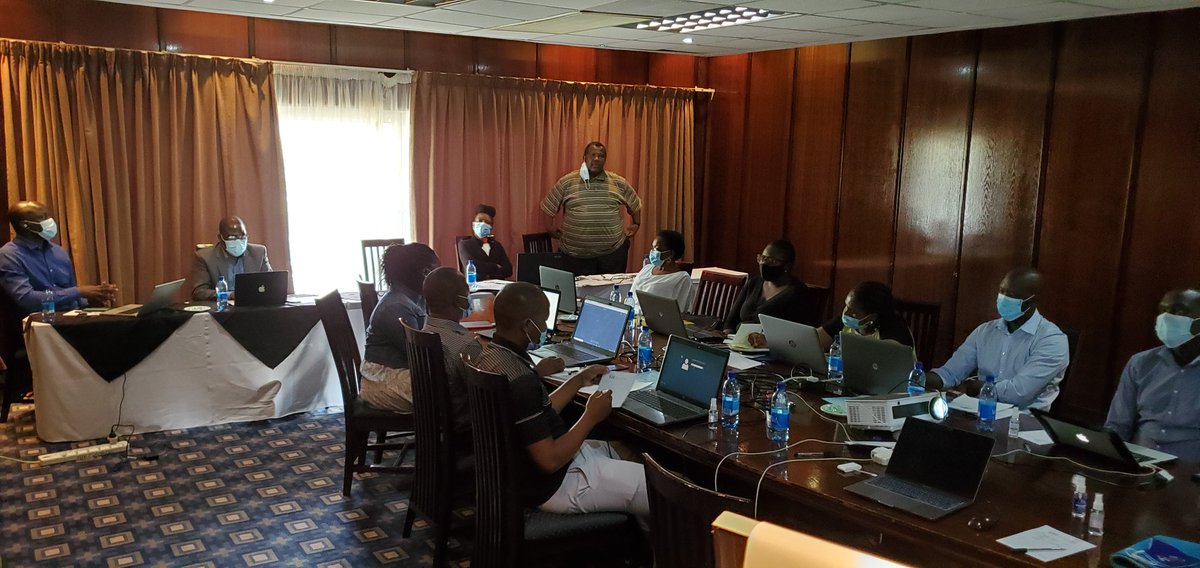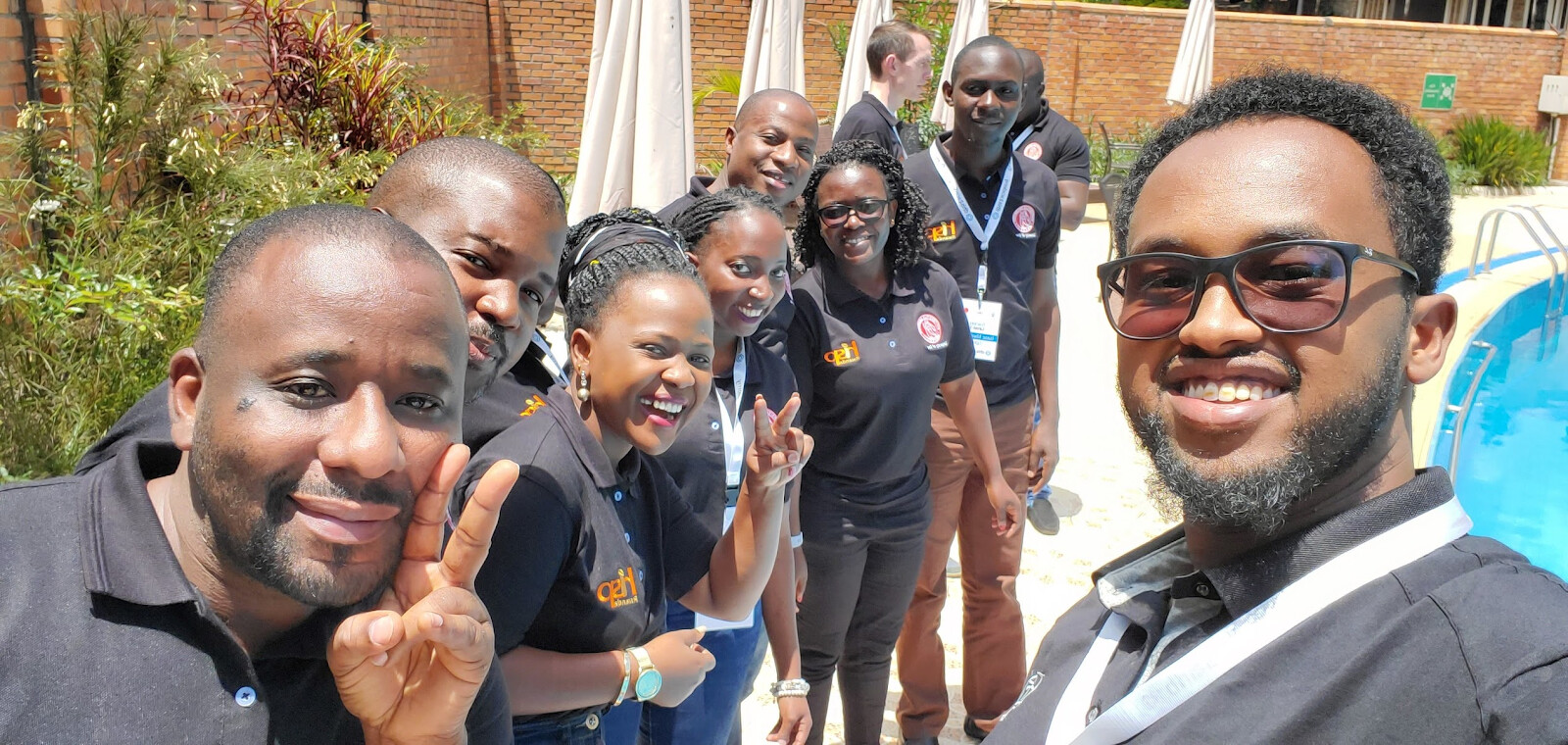

The last population census was conducted on 27 August 2014.reported through the District Health Information System 2 (DHIS2) where national-level stakeholders would be able to utilize them. 1 , 2The Ministry of Health uses the population projections from the Uganda Bureau of Statistics (UBOS) within DHIS2 to obtain denominators for coverage estimates. CHWs have helped contribute to improved health outcomes in Uganda, where preventable diseases such as malaria, HIV/AIDS, and tuberculosis account for more than half of morbidity and mortality. Even before the COVID-19 pandemic, the country’s health system was stretched: Uganda has only one doctor for every 17,000 people, fewer than the World Health Organization (WHO) recommendation of one doctor for every 1,000 people.
The Smart Health app also provides task lists and notifications to help CHWs prioritize patient visits and follow-ups. Workflows are automated and intended to increase CHW efficiency and accuracy. 30, 2021.A global health leader situated at Columbia University, ICAP has worked since 2003 with one central goal: to improve the health of families and communities.The Smart Health app guides CHWs through routine diagnostics and processes, with specific workflows for providing care related to pregnancy, childhood diseases, nutrition, family planning, immunization tracking, and most recently COVID-19. A DHIS2 Web API Training ticket holder receives access to the one-day virtual DHIS2 Web API training on Sept. 200.00 DHIS2 Web API Training. A key factor enabling CHWs to respond to this surge was the Smart Health app, a digital health management tool carried by each of Living Goods’ over 7,800 CHWs.A Bootcamp ticket includes general admission to the Symposium, access to all unique technical Bootcamps, and the option to sign up for the Experts Lounge, all taking place virtually Sept.

Existing investments in digital infrastructure, including an in-house development team, enabled Living Goods to make its own workflow adjustments without relying on an external technology company, saving crucial time and minimizing risks to its CHW workforce. At times, features that could be included in the app, such as e-learning, were developed on separate platforms to maintain usability for these users. App developers aimed for usability and simplicity in design, especially when adding new functionality, keeping in mind the CHWs with the lowest technological literacy.
The CHWs also sell health products such as artemisinin-based combination therapy, antimalarials, clean cooking stoves, and fortified foods. Its CHW workforce goes door-to-door registering pregnancies and diagnosing malaria, diarrheal disease, and pneumonia. Real-time data collection gave Living Goods supervisors and government decision makers a view on emergent trends that could trigger quick changes to protocols and policy.Smart Health Apps in Uganda Before COVID-19Living Goods began operating in 2007 as a nonprofit social enterprise, aiming to create an entrepreneurial network of CHWs in Uganda that provide basic health care and information to families living in rural regions.
Medic’s digital tools help the community health workers (CHWs) who deliver care in the hardest-to-reach places provide effective and efficient care management through targeted task lists, digital patient profiles, messaging, and diagnostic decision support. Data entered in a CHW’s smartphone syncs automatically with servers as soon as an internet connection becomes available (or at monthly meetings).Medic, formerly called Medic Mobile, is a nonprofit health-technology company based in San Francisco. Developers also built the app to function in low-connectivity areas. For instance, Medic developers used simple drop-down menus to restrict data entry in order to streamline workflows, promote ease of use, and limit user error. Medic received unrestricted donor funding for the project, which enabled its developers to try innovative design approaches and conduct extensive user testing.In the process of building the Smart Health app, which was introduced in 2015, Medic developers spent several weeks on the ground with Living Goods supervisory staff and CHWs, learning about workflows and identifying essential infrastructure and potential challenges. It would involve merging an existing suite of mobile apps that Living Goods had been using to digitize household registrations and adding automated workflows for basic care and built-in performance dashboards.

Living Goods has provided real-time data on health outcomes for the Kenyan government since 2019 and is currently working on similar integration in Uganda. DHIS2 interoperability: Smart Health gives the government access to real-time data dashboards that are standardized and integrated with DHIS2. Real-time performance management: Because the Smart Health app captures every patient interaction in real time, supervisors and government officials can monitor CHW performance against set key performance indicator targets, spot disease outbreaks, recognize high-performing CHWs, and prioritize CHWs in need of managerial support. This predictive capability improved CHW population-coverage methods, which previously relied on geographic canvassing. Data-driven task list: The Smart Health app uses live patient and census data and artificial intelligence to create predictive daily task lists that help CHWs prioritize time for patients with the highest risk of health problems. SMS: When a CHW logs a pregnancy, birth, or treatment in the app, the household is auto-enrolled in SMS messaging for content and reminders related to treatment and care.
Dhis2 Uganda Trial Evaluation To
Good results from the pilot led to the rollout of family planning services across Uganda.Living Goods invested early in a randomized controlled trial evaluation to measure the impact of its model on maternal and child mortality in Uganda, and 2014 results showed a 27 percent reduction in under-five mortality after three years, at an estimated cost of US$68 per life saved. 6 That same year, Living Goods concluded a joint pilot program with the government of Uganda to introduce new family planning workflows to the Smart Health app. The expansion plan also involved scaling operations to neighboring Kenya.By 2018, Living Goods’ workforce had grown to include 7,000 CHWs serving more than 5.6 million Ugandans. 4 The integration of the Smart Health app in 2015 was part of a larger effort to aggressively scale up the organization’s operations in Uganda, by expanding the size of its CHW workforce, the number of people covered by its services (from 1.5 percent of the Ugandan population to 5 percent 5 ), and the range of health-related services offered.


 0 kommentar(er)
0 kommentar(er)
